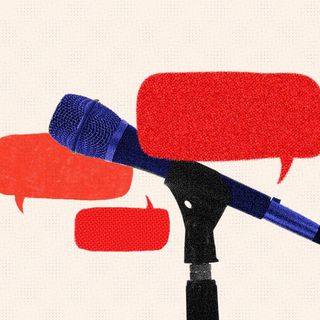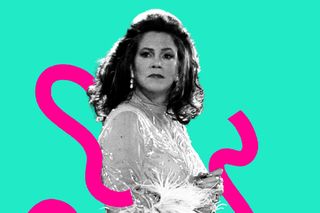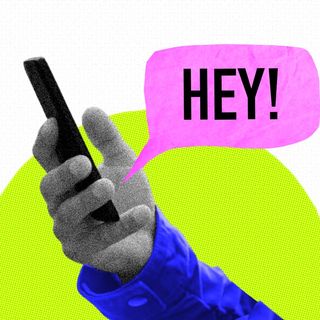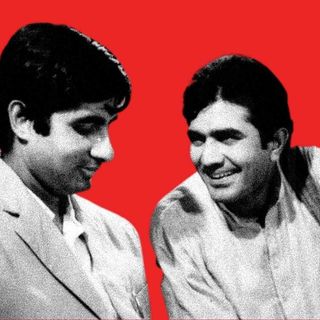
‘Friends’ Creator Regrets Using Incorrect Pronouns for a Trans Character on the Show
The sitcom has not aged well, and realizing the social fissures is essential for course correction.

The story of a culture’s tryst with Friends is also the story of disillusionment. For years now, people have begrudgingly been made aware of a truth: the show has not aged well. There is racism, fat-shaming, ceaseless objectification of women, fragile masculinity, and a crude distaste for social reality as six people live in the city of everyone’s dreams. Recently, the show’s co-creator also acknowledged transphobic undertones that run through the length of the show, coming together as a skein of crude commentary against queerness.
“We kept referring to her as Chandler’s father, even though Chandler’s father was trans. Pronouns were not yet something that I understood. So we didn’t refer to that character as she. That was a mistake,” Marta Kauffmanplaintively said in an interview that will air later next week.
If memory serves well, the episode arcs involving Chandler’s “father” were steeped in ignorant ridicule. Chandler has a “gay dad” — cue, gasp and giggle. Actor Kathleen Turner played Chandler Bing’s father, Amanda Bing. But Amanda was never explicitly portrayed as a trans person; for all the group’s care, Amanda worked as a drag artist Helena Handbasket in “Viva Las Gaygas” and was referred to as gay. In the three episodes later down in Season 7 Amanda actually appears, the plot involved poking fun at her transitioning and/or her relationship with other men. In one episode, Chandler’s mother Nora and Amanda Bing are bickering. “Aren’t you a little old to be wearing a dress like that?” says Amanda, to which, Nora replied: “Don’t you have a little too much penis to be wearing a dress like that?”
This humor is crass and simplistic, and gives way to a problem that is anything but. In the almost 30 years since its creation now, the show’s treatment of gender and sexuality represents gross generalization, served with a side of ignorance. For seven wholeseasons, we are told Amanda Bing is a gay male drag queen. It is only later that we find she is a trans woman. “…given that she apparently presents as female 24/7 and is implied to have done so for years. This is a pretty safe assumption to make,” Samantha Riedel argues in them.
The show then conflates trans women with drag queens. As far as myth-busting goes, drag is an art form while the other is a lived experience — “to muddle the two erases the inherently personal nature of being trans,” noted Shon Faye in Dazed. TheLGBTQ+ group GLAAD explained: “Transgender women are not cross-dressers or drag queens. Drag queens are men, typically gay men, who dress like women for the purpose of entertainment. Be aware of the differences between transgender women, cross-dressers, and drag queens. Use the term preferred by the individual.” It is important to separate the two, for the distinction marks the permanence of trans identity.
Related on The Swaddle:
‘The Simpsons’ Actor Who Voiced Apu Apologizes to Indians for Stereotypical Portrayal
Amanda was a caricature more than a person with a gender identity, deserving of mockery and barbs purely by virtue of the inherent “otherness.” Even Kathleen Turner in a 2018 interview accepted the contentious legacy: “I don’t think it aged well…everyone thought [my character] was just dressing up.”
There are other displays of rigid heteronormativity that groan and mumble between the trajectory of the show. Another character Ross Geller is famously traumatized at the start for having a “lesbian wife.” But Carol and her partner Susan’s plotline serves a function: to make Ross uncomfortable, and one doesn’t have to dissect too far to understand the fragile masculinity he carries throughout. “It’s certainly true that any semi-respectful portrayal of lesbian love in 1990s television was rare at best, but that doesn’t mean Susan and Carol’s plotline was good,” Riedel added. In one episode, Ross stereotypically comments that he should have known Carol was gay because she drank beer “straight from the can.” How else should one have it?
There is queerphobia that is disguised as the skeleton of a main character’s background story: Carol’s lesbianism is what defines Ross when we first meet him. There was more homophobia peppered through the show, designed to evince quick laughter from an audience who shared their reluctance to accepting queerness.
Let’s say you’re a fan and are tempted to dismiss these jokes in the interest of artistic liberty. The response to the show’s messy history often uses the cultural context of the time as a crutch: arriving in the late ’90s, Friends couldn’t possibly account for the respectful portrayal of queer characters or the right language. The conversation around pronouns is slowly moving and still has detractors ridiculing the linguistic amendments to protect their “free speech” and the “sanctity” of language. Even other beloved shows and movies and elements of pop culture are problematic through the presentlens, and weren’t so from the cultural gaze of when they were first introduced to the world. This is a typicalnarrative, one that defends good-old “humor” at the expense of inclusivity and stereotyping.
Friends is both popular and polarizing; but it’s the collective nostalgia that has built Friends to what it was, which makes it even more important to critique it. We must reconcile with the fact that people pedestalize stories just as much as they do people — things that are iconic and culture-defining have a soft corner for what they mean to us. And while all that is tender and sweet, it’s important to also know that love for things and people can evolve with new knowledge. Friends is iconic. But Friends is also transphobic, racist, a site of celebrating the most contentious traits in men and women. Friends holds much of early 2000s nostalgia. But the fact Friends does that only for some people, speaks to how it is remarkably exclusionary. These are all truths that sit in discomfort, and we must see the love the show receives along with the discrimination built within.
And arguably, a “mainstream” fan — mostly cis-gendered and heteronormative — should not be deciding the degree to which the show’s punchlines are offensive to people. If advocates from any marginalized group are screaming to the world about the problematic undertones present, the only respectable answer has to be to listen to them and understand why.
An important question to ask here is also about remorse: what good do apologies do in social justice settings? These are complicated considerations with no absolute, defining answer. But to dwell on them is a red herring. The true litmus test of every conversation around inclusivity and representation is to see if people acknowledge the extent of their prejudices and biases. It is only when we see social fissures upholding problematic legacies, can we begin to question ourselves and others.
Saumya Kalia is an Associate Editor at The Swaddle. Her journalism and writing explore issues of social justice, digital sub-cultures, media ecosystem, literature, and memory as they cut across socio-cultural periods. You can reach her at @Saumya_Kalia.
Related


The Internet Is Outraged at ‘Hello’, ‘Hey’ Being Called Unprofessional Language
